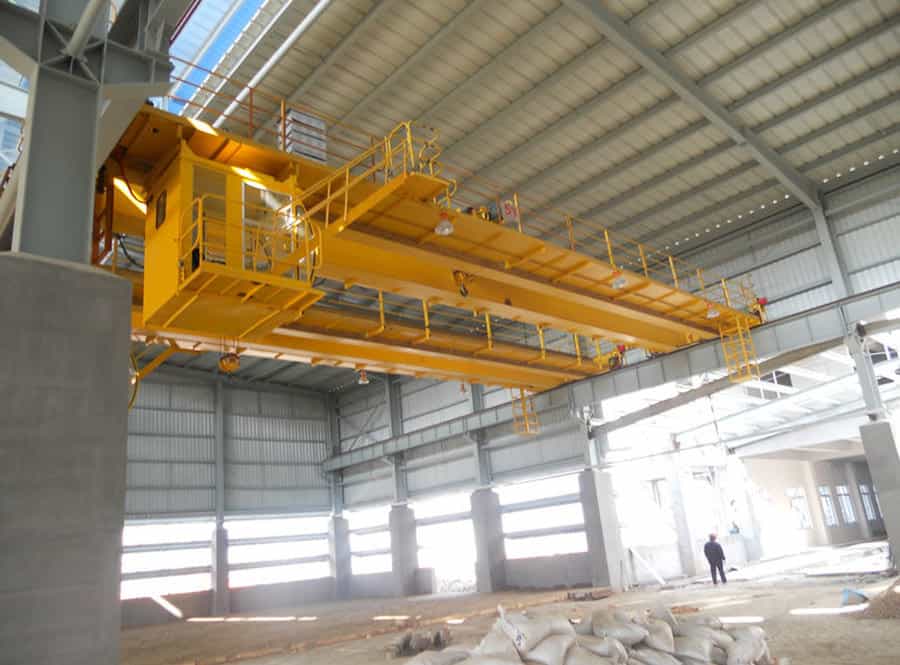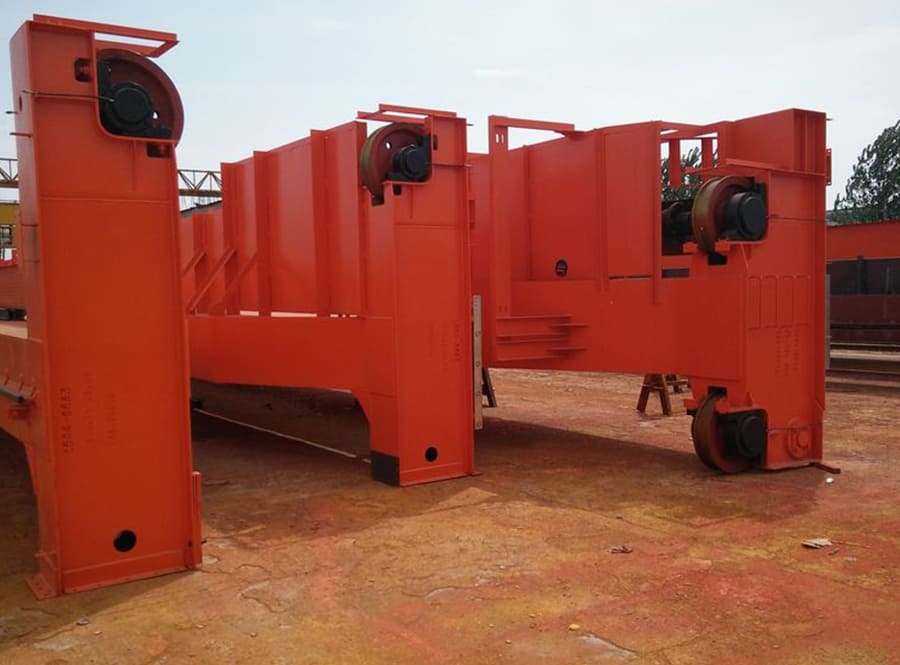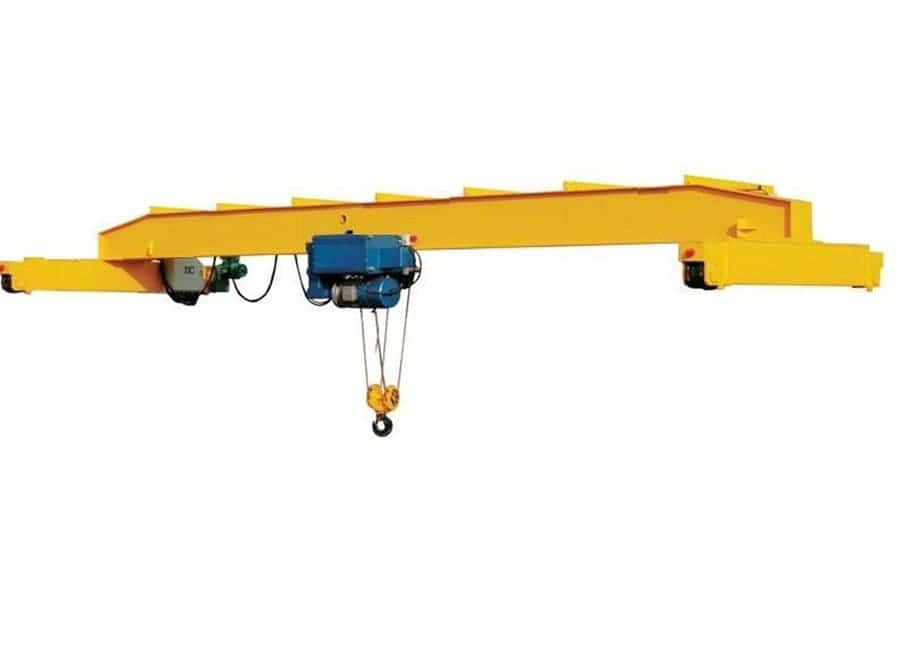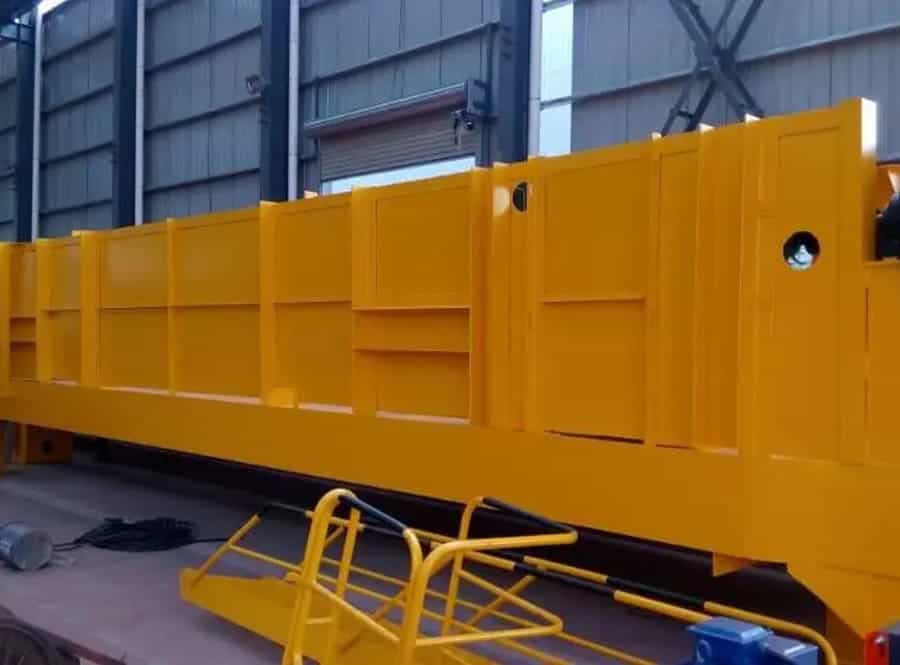Abstract: למכירה מנוף גשר עילי are indispensable equipment for lifting heavy objects in various industries. This article introduces the lubrication methods and lubrication system design of bridge cranes, and briefly explains the lubrication methods and lubrication principles of important parts. analyze. It also gives suggestions on lubrication measures and recommended grease for each component in the bridge crane. It has certain guiding significance for the daily maintenance and improvement of user maintenance personnel and the lubrication selection of crane manufacturer technicians, and helps to prevent hidden dangers. problems occur.

Keywords: lubrication pump; distributor; graphite
1 Introduction
The lubrication system is an important part of the מנוף עילית i beam. Choosing the correct lubrication method and using the correct grease to lubricate each component within a reasonable lubrication cycle can effectively extend the service life of the components and ensure safe production. In the design of the lubrication system of an overhead crane, it is necessary to first understand the characteristics of various lubrication methods, be familiar with the lubrication principles, as well as the lubrication cycles and grease types of each component, before choosing the correct lubrication solution.
2 Lubrication methods
2.1 Single point lubrication
Single-point lubrication is generally suitable for rotating parts or components with a long lubrication cycle, such as bearings, couplings, motors, etc. in the hook group. Install an oil cup at the lubrication point. After the oil gun and the oil cup are connected, oil lubrication is performed manually. Single-point lubrication is easier to operate and the amount of oil is easy to control. However, the lubrication points are scattered, the lubrication takes a long time, and sufficient operating space is required.
2.2 Centralized lubrication
To reduce מנוף גשר תלוי maintenance and downtime, a centralized lubrication system should be used wherever possible. Centralized lubrication is a commonly used lubrication method for bridge cranes. It mainly leads the lubrication points such as wheel bearings, fixed pulley block bearings, and drum block bearings to the lubrication pump through distributors and oil pipes, and sets corresponding oil pipe protective covers and fixed clips. According to the different lubrication cycles and lubrication conditions of the crane’s components, centralized lubrication is divided into manual centralized lubrication and electric centralized lubrication. The design of a centralized lubrication system must fully understand the scope of application of the lubrication system and the lubrication requirements of each component.
2.2.1 Manual centralized lubrication
Manual centralized lubrication generally consists of a manual lubrication pump, main oil pipe, distributor, branch oil pipe, pipe joints and related connection accessories. Manual lubrication pumps usually use plunger-type structural volumetric pumps. The handle is manually swung and the rack plunger is driven to reciprocate through internal gears to supply lubricating grease to the outside. The grease enters the distributor through the main pipeline. The distributor serves as a metering oil supply device. The piston inside the housing reliably and forcibly distributes the lubricating grease input from the inlet in a predetermined amount in a progressive manner. The grease enters the lubrication points of each component through each oil pipe.
The manual lubrication pump must be manually operated. Therefore, the manual centralized lubrication system is suitable for equipment with low lubrication frequency. It is widely used in bridge cranes, such as manual centralized lubrication system for trolleys and manual centralized lubrication systems for large trucks.

2.2.2 Electric centralized lubrication
Electric centralized lubrication generally consists of electric lubrication pumps, electric fuel pumps, main oil pipes, distributors, branch oil pipes, pipe joints and related connection accessories. Electric lubrication pumps usually use an electric motor to directly drive a plunger pump to discharge lubricating grease. The grease enters the distributor through the main pipe, and then enters the lubrication points of each component through each branch oil pipe.
The electric centralized lubrication system can supply oil regularly and quantitatively without manual operation. It is widely used in bridge cranes, such as electric centralized lubrication systems for trolleys and electric centralized lubrication systems for trolleys.
2.3 Wheel lubrication
On the drive balancing trolley or wheel set, install the rim oiler on the outside. There are generally two types of rim lubricators: lubricating oil lubricators and graphite lubricators. Considering the advantages of no pollution, no oil leakage, and easy operation, graphite lubricators are generally recommended.
2.3.1 Principle
When lubricated with a graphite lubricator, the graphite bar is pressed against the rim by a spring. After the wheel rotates, it rubs against the graphite strips, so that the graphite powder is coated on the wheel rim to form a graphite film, which forms a lubrication protection between the wheel rim and the rail.
Lubricating oil applicator: The oiling wheel is pressed against the wheel rim by a torsion spring. The rotation of the wheel drives the refueling wheel to rotate, thereby driving the refueling pump to work. The refueling pump supplies oil to the refueling wheel. The refueling wheel applies a small amount of oil to the wheel rim to form an oil film. The oil film prevents the wheel rim from being in direct contact with the rail.
2.3.2 Installation position of lubricator
Each set of cart operating mechanism or trolley operating mechanism needs to be equipped with oilers on four wheels. When a single oiler is used for a single wheel, it is called a single oiler arrangement, and when a single wheel uses two oilers, it is called a double oiler arrangement.
The installation position of the lubricator relative to the wheel is shown in Figure 3. It can be installed in the non-shaded area and should avoid the shaded area. When using a lubricant lubricator, the tank is usually mounted slightly higher than the lubricator.
2.3.3 Adjustment of the amount of lubricating oil (graphite)
Graphite lubricator: It can work after proper installation and adjustment. Regularly check the wear of the graphite strip. Once the wear is serious and the lubrication effect cannot be achieved, replace it with a new graphite strip.
Lubricating oil applicator: When the lubricator starts working, since the air inside the hose and the body is not automatically ejected, lubrication cannot be performed. The lubrication status should be checked after installation. When an oil film forms on the rim, it is considered normal. , otherwise adjust the oil discharge volume through the oil volume control pin to make it normal. In addition, the oil-coated tanker is a wearing part and should be replaced when it is worn to a certain extent.
2.3.4 Lubricating medium
Lubricant oil applicator: Since the oil film needs to withstand extremely high pressure, oil that can form a high-strength oil film should be selected. No. 70 mechanical oil is recommended.
Graphite lubricator: Made of graphite – graphite strips are the lubricating medium.
2.4 Wire rope lubrication
Wire rope lubrication is divided into two types: static lubrication and dynamic lubrication. Static lubrication of the wire rope means regularly applying grease on the wire rope, which is conventional lubrication. Dynamic lubrication of the wire rope means that when the wire rope moves, the wire rope lubrication device provides lubricating oil to the wire rope. When the wire rope stops moving, the lubrication stops. Dynamic lubrication of wire ropes has the advantages of controllable oil volume, uniform and reliable lubrication, real-time dynamics, and is more conducive to wire rope maintenance. Therefore, dynamic lubrication is recommended when designing wire rope lubrication.
There are two main types of dynamic lubrication of wire ropes: one is to lubricate the wire rope at the drum, which is generally used when the drum is not too long; the other is to lubricate the wire rope at the fixed pulley block, if the fixed pulley block With only one pulley, the wire rope cannot be lubricated here.
The wire rope dynamic lubrication device mainly consists of an oil tank, oil pipes, mounting brackets, oil pump assembly and oil coating tank.
The lubrication of מנופי גשרים is one of the important measures to ensure the normal operation of the machine, extend the life of the parts, improve efficiency, and promote safe production. Therefore, we must pay attention to the lubrication of the machine, maintain the lubrication equipment regularly and carefully, and check whether the lubrication system is working properly.





















